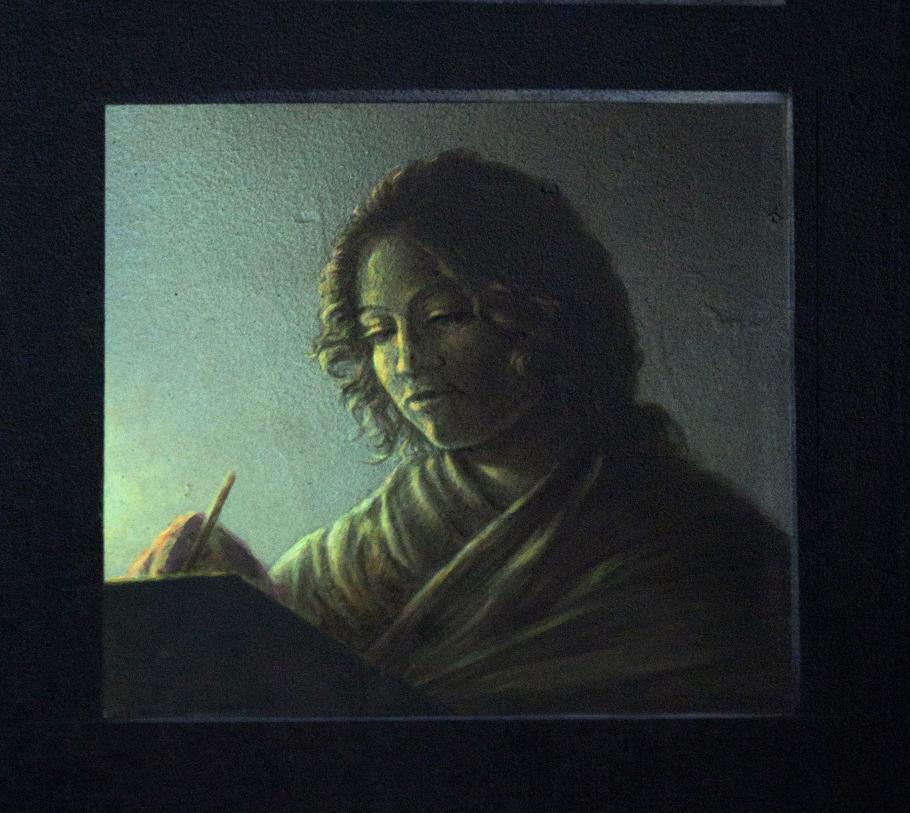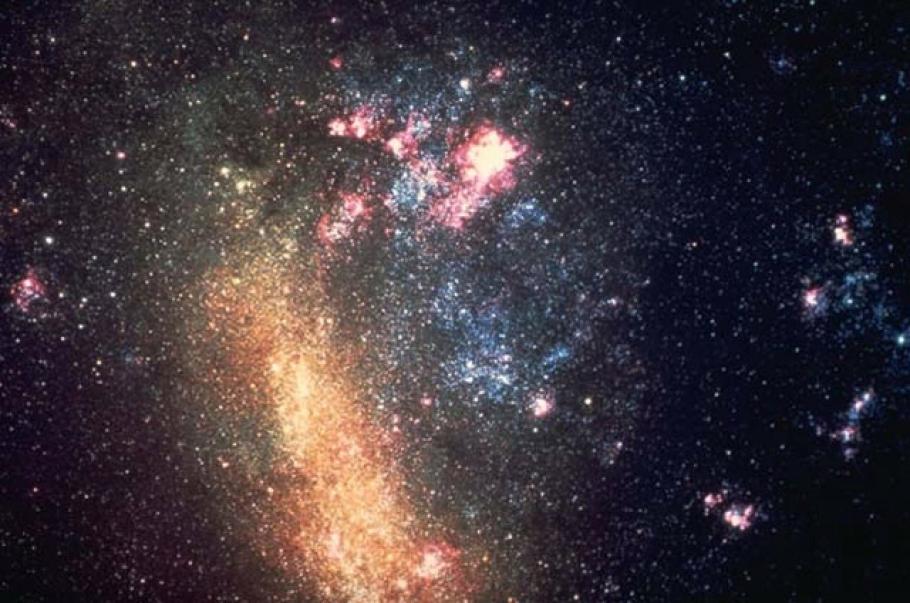One of the jokes I inherited from my student years is the final exam question "Describe the Universe" which was followed by "and give two examples." In the 1960s, this could be funny of course, at least to astronomers. Today, however, the answer might be, "Only two?" Since the Explore the Universe gallery opened in September 2001, the appreciation that more than our universe may well exist has strengthened If we were to revamp the gallery today, there would be some discussion of where the evidence might someday actually come from. What we will probably do instead is utilize one of the various updatable features already in the gallery, when the time really comes. Indeed, as the Museum contemplated a new astronomy gallery in the 1990s, we knew that we were dealing with a subject that is constantly changing. We had formed a core group of scientists, historians, educators, and designers to craft a vision for the new presentation. What emerged, after three Museum directors and many other staff changes, was a simple and hardly radical statement: "New Tools, New Universes." Of course, it was the same universe each time, but seen and understood more completely, and, typically, was found to be very unlike the conception that went before. This single statement embodied others, like "New Universes tend to be larger and less homocentric" or "There are no final answers, only better informed questions." One of the most interesting themes, or threads, that we decided to incorporate, however, was how "Women have played significant roles in changing our view of the nature of the Universe." This last one, like the others, helped to guide the choices we made as to what instruments played a role in giving us new views, where did those instruments come from, and who were the people who either used those instruments or analyzed the data coming from them? During the course of developing the gallery we well knew that astronomy has long been a male-dominated enterprise. This is, happily, no longer the case. But even in past times, it is not difficult to point to women who played critical roles in revolutionizing our view of the nature of the Universe. We therefore set about to portray some of these women in Explore the Universe, within the contexts in which they worked, and the roles they played making the new discoveries. As you walk through the gallery located on the east end of the first floor of the Museum, here are some of the stories you will encounter: The First Room The first universe you will encounter is human or earth-centered, "homocentric" in other words. It was the view we constructed based upon observations by eye alone, aided only by pointing devices to determine positions of things in the sky, and over time, their motions. The geometric earth centered view of the Greeks is depicted, together with the instruments that refined it, ending in a replica of Tycho Brahe's great 16th Century equatorial armillary sphere being used by one of his assistants. No women are depicted here.
The Second Room The second universe, brought by the advent of the telescope, led to the confirmation of a model suggested prior to Tycho: that the universe was centered on the Sun and not the earth. Tycho's tables and observations had given strong evidence of this, but in and of themselves were not sufficient to overthrow the Aristotelian universe. Observations with Galileo's telescope were sensational enough to bring about this revolution, enabled by his ability to dramatically portray his evidence (the Jovian satellites, the Venusian phases, the Sun's spots, etc.) through visual representation. Walking through this second room is a walk through telescopic history in a universe composed of stars, all contained within what we call the Milky Way. Ever bigger and more powerful telescopes were built through the 18th and 19th centuries to probe this universe. Featured in the gallery is the grand 20-foot reflector of William Herschel in a diorama showing him at work gauging the heavens, with his sister Caroline both directing and recording his observing routine from an open window. Caroline's contribution to William's legacy, producing the first observational map of the structure of the known universe, was in fact as more than his assistant. It was she, according to recent scholarship, who made William's work systematic, and it was she who also encouraged him to carefully catalog those fuzzy faint apparitions they were recording night after night, year by year. These so-called nebular forms could be unresolved clusters of stars, or some ethereal shining fluid out of which stars someday would form. But were they among the stars? Or beyond the stars? Were they other universes, the Herschels asked? The distribution of the nebulae was oddly different than the distribution of stars, or the shape of the universe as they found it.
Caroline, of course, worked in astronomy by virtue of her brother's interests, and they both were supported by a king's pension, provided by George III after William had discovered the planet Uranus in 1781. The Third Room The question the Herschels posed (“what was the nature of the nebulae?”) was answered in the early 20th century when photography was applied to increase the power of the telescope. The eye is a very sensitive detector of light energy, but it accumulates that energy for only a very small fraction of a second, depending upon the light level. Photographic emulsions can collect and accumulate light energy for many hours, providing a vast increase in sensitivity. This is why, once photographic emulsions came available, they were quickly adapted to telescope cameras to replace the eye. Now, also, information could be stored on these photographic plates and be available permanently, housed in protected chambers astronomers called vaults, and brought out for examination day and night. By 1900, photographic astronomy had shown that most of the faint nebulae Herschel had glimpsed were in fact spiral in structure, reminiscent of whirlpools. And there were many many thousands of them. Meanwhile, women working at Harvard College Observatory, like Henrietta Swan Leavitt, were making some very valuable observations and coming to powerful conclusions examining many photographs over time of nearby star clusters like the Clouds of Magellan, visible only from the southern hemisphere.
There were many stars in these clusters that did not radiate constantly, but varied in brightness over great ranges. Leavitt’s contribution, between 1908 and 1912, was to realize that for a certain class of these light-varying (or variable) stars, the period of their variation was in proportion to their mean brightnesses. The brighter ones had longer periods (a matter of days) than the fainter ones. Since all the stars were in the same cluster, and therefore at the same distance, she had discovered an intrinsic property of these stars. Without even knowing why these stars varied in brightness, she showed that they constituted a new and valuable means for determining the distances to stars, if their intrinsic brightnesses could be ascertained. Her conclusion was quickly picked up by a astronomers both in Europe and the United States. The Mount Wilson astronomer Harlow Shapley calibrated this class of variables and found bunches of them in globular clusters. By 1920, he had determined their distribution and from it deduced the size of the Milky Way Galaxy, finding it so vast he felt nothing could be outside of it. Soon after Shapley's work, Edwin Hubble, also working at Mount Wilson with the new 100-inch reflecting telescope, used Leavitt's variables and Shapley's calibrations, modified by others, to determine the distance to the Andromeda nebulae, one of the largest and brightest spirals in the sky. He found that its distance was at least 10 times greater than Shapley's estimate for the size of the Milky Way. In others words, it lay outside the Milky Way and hence was an island universe. Thus Leavitt, employed as an assistant at the Harvard College Observatory (not included through an accident of family as Caroline Herschel had been) produced a distance-determining tool that once again revolutionized the universe. We live in a universe of galaxies, not stars.
Neither Leavitt or Caroline Herschel worked as independent astronomers, setting their own course of investigation. Although Leavitt was given a certain degree of freedom to search out anything that might be interesting, she was directed to this work by others. As you continue to walk through the gallery, you will encounter other women, in more recent times, who designed their own research programs and carried them out. These include Vera Rubin in the fifth room, who found in the 1970s that dark matter dominates galaxies like Andromeda, and Margaret Geller, who found in the 1980s that the universe is not uniform, but clumpy on a huge scale that may well outline the distribution of dark matter in the universe. So if and when we find evidence that, indeed, universes other than our own exist, and have left their marks on our own universe in deep time, what role will women play in that realization? Only time, and larger telescopes on the ground and in space, will tell.



